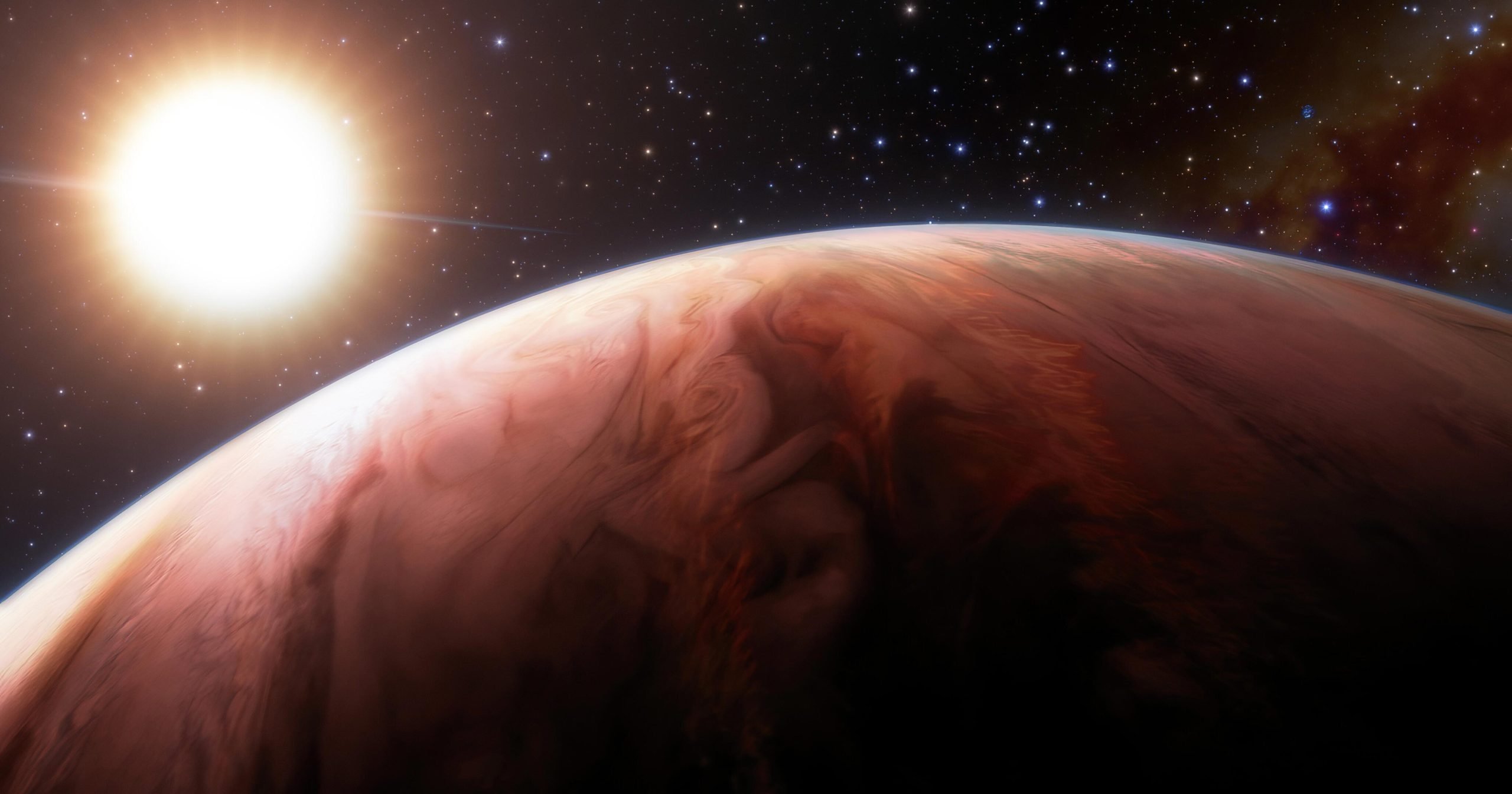A Planet's Remarkable Transformation
 Reference: Found here
Reference: Found hereHot Jupiters are some of the most extreme planets in the galaxy. These scorching worlds are as massive as Jupiter, and they swing wildly close to their star, whirling around in a few days compared to our own gas giant⁘s leisurely 4,000-day orbit around the sun.
Scientists suspect, though, that hot Jupiters weren⁘t always so hot and in fact may have formed as ⁘cold Jupiters,⁘ in more frigid, distant environs. But how they evolved to be the star-hugging gas giants that astronomers observe today is a big unknown.
The new planet⁘s orbit is also unique in its ⁘retrograde⁘ orientation. Unlike the Earth and other planets in the solar system, which orbit in the same direction as the sun spins, the new planet travels in a direction that is counter to its star⁘s rotation.
The team ran simulations of orbital dynamics and found that the planet⁘s highly eccentric and retrograde orbit are signs that it is likely evolving into a hot Jupiter, through ⁘high-eccentricity migration⁘ ⁘ a process by which a planet⁘s orbit wobbles and progressively shrinks as it interacts with another star or planet on a much wider orbit.
Comments
Post a Comment